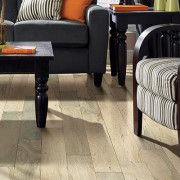Green Flooring Series: The History of Green Flooring
We are always hearing the term “Go Green” but do you ever think of how you can follow that mantra? It’s quite simple: green flooring. Green flooring, or sustainable flooring, is an easy concept to understand: you use sustainable materials to produce a “green” floor for your home.
There are many advantages of using green flooring. The biggest is probably that it reduces the demands on the ecosystem during its life-cycle. From production to its use to its disposal, green flooring is lessening its effect on our ecosystem and is helping create healthier and safer buildings.
There are many types of green flooring ranging from hardwood substitutes to natural carpet fibers to linoleums. Bamboo flooring and coconut timber are also great alternatives because both materials grow quickly and offer good durability.
One green non-wood flooring option is natural cork, which can be harvested from the bark of a particular type of oak tree. Another great material can be produced from the sap of a rubber tree and it creates a durable and resilient green flooring material.
Linoleum is a material that is made from sustainable plant materials and it is mainly created from ground flax seeds. Linoleum can also be made up of other renewable resources such as pine resin and cork. There are also a few types of green carpet fibers, such as a carpet made from plant fibers like jute and wool.
Green flooring may have popped up overnight or it could have been a long awaited gem, but no matter, green flooring is here to stay.
This post was written by Thais Sousa. Follow Thais on Google.









